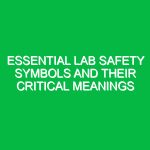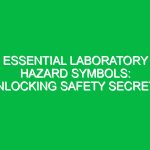Welcome to the Toolbox Talk
Hello team! Today, we gather for our Toolbox Talk to discuss an important topic that directly impacts our daily operations and overall Safety: New Equipment in the Health, Safety, and Environment (HSE) realm. As we all know, equipment plays a crucial role in our work processes. The introduction of new tools and machinery can significantly enhance our efficiency, but they also come with their own set of challenges and risks. Our objective today is to understand how to effectively integrate this New Equipment into our workplace while prioritizing Safety and compliance.
Understanding New Equipment in HSE
When we talk about New Equipment, we refer to any tools, machinery, or technology that has recently been introduced into our workspace. This could range from advanced Safety Gear to automated machinery and digital monitoring systems. The goal of adopting New Equipment is not just to improve productivity but also to enhance Safety Measures across our operations.
The Importance of New Equipment
New Equipment can bring numerous Benefits to our workplace, including:
- Improved Safety: Many new tools are designed with advanced safety features that mitigate risks.
- Increased Efficiency: Modern equipment often operates faster and more efficiently than older models.
- Enhanced Compliance: New equipment can help us meet regulatory Standards more effectively.
- Better Ergonomics: New designs can reduce strain and injury among workers.
Challenges and Risks Associated with New Equipment
While New Equipment has substantial benefits, it can also introduce challenges and risks. Here are some potential Hazards to consider:
- Training Requirements: Employees may need Training to operate new equipment safely.
- Integration Issues: New tools may not integrate smoothly with existing systems.
- Maintenance Needs: New equipment may require different Maintenance protocols.
- Unfamiliarity: Lack of familiarity can lead to accidents and misuse.
Best Practices for Incorporating New Equipment
To ensure that we maximize the benefits of New Equipment while minimizing risks, we should adhere to the following Best Practices:
1. Comprehensive Training
Before starting to use any new tool or machinery, it’s critical that all employees receive proper training. This training should cover:
- How to operate the equipment safely.
- Emergency Procedures related to the equipment.
- Maintenance and inspection protocols.
For example, if we introduce a new type of lifting equipment, employees must know how to use it correctly to avoid injuries.
2. Risk Assessment and Safety Protocols
Conducting a thorough risk assessment before integrating New Equipment is essential. This should involve:
- Identifying potential Hazards associated with the equipment.
- Implementing Safety Measures to mitigate identified risks.
- Creating emergency response plans tailored to the equipment in use.
For instance, if we implement a new chemical handling system, we should assess chemical exposure risks and establish clear Safety Guidelines.
3. Continuous Monitoring and Feedback
Once the new equipment is in use, continuous monitoring is vital. This includes:
- Tracking equipment performance and safety incidents.
- Gathering feedback from employees about their experiences using the new equipment.
- Making adjustments to protocols based on real-world usage and feedback.
For example, if employees report difficulties with a new safety harness, we should address these concerns through additional training or equipment adjustments.
4. Compliance with Regulations and Standards
Compliance with local, national, and international regulations is paramount when integrating New Equipment. Familiarize yourself with:
- The Occupational Safety and Health Administration (OSHA) standards.
- Industry-specific regulations related to equipment use.
- Company policies regarding equipment safety and usage.
Staying compliant not only keeps us safe but also protects the company from legal liabilities.
Real-Life Examples and Scenarios
Let’s consider a hypothetical scenario to illustrate the significance of proper New Equipment integration:
Imagine we have introduced a new automated cutting machine in our manufacturing department. Initially, employees are excited about the improved efficiency it promises. However, without proper training, an employee attempts to adjust settings without following the guidelines provided. This oversight leads to a mishap that causes injury and downtime.
This scenario highlights the need for comprehensive training and adherence to safety protocols. If the team had undergone thorough training and risk assessments prior to using the equipment, the accident could have been avoided.
Open Discussion
Now that we’ve explored the importance of New Equipment and Best Practices for its integration, I would like to open the floor for discussion. Here are a few questions to consider:
- Have you experienced any challenges with new equipment in your work?
- What additional training do you think would help improve our safety practices with new tools?
- Can you share a positive experience you’ve had with new equipment that improved safety or efficiency?
Your insights are invaluable, and sharing experiences can help us all learn and adapt better.
Conclusion
In conclusion, the integration of New Equipment into our daily operations is a significant aspect of enhancing our Workplace Safety and efficiency. It is crucial that we approach this process methodically—through comprehensive training, risk assessments, and continuous monitoring. By adhering to safety protocols and compliance standards, we can create a safer work environment for everyone.
Thank you for your attention and commitment to maintaining a safe workplace. Let’s continue to prioritize our health and safety as we move forward with any New Equipment in our operations.


